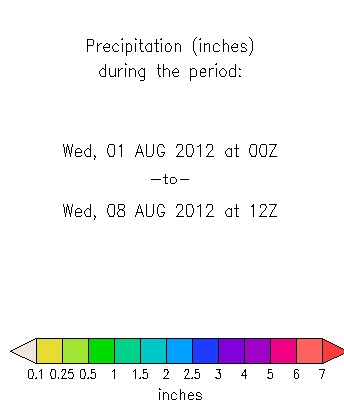The best historical analog is a relatively recent one, said Michael Brewer, a physical scientist at NOAA’s National Climatic Data Center.
“This year actually looks a lot like 1988,” he said. “A summer-onset drought that hit in the Corn Belt, with conditions that came on and deteriorated rapidly, with big impacts to the agricultural community.”
That drought caused an estimated $40 billion in agriculture losses — $78 billion in today’s dollars. But it lasted only a year.
“That’s very different than the droughts of the ’30s and ’50s,” Brewer said. “The drought in the ’30s was almost 10 years long. In the ’50s, depending on where you were, it was anywhere from a few years to six to eight.
Though scientists have not fully analyzed the causes of the current drought, Brewer said it is “consistent with what we’d expect under climate change.”
“You’re going to see more extremes,” he said. “When it rains, it rains harder. But it means there is potential to go with longer periods of time between rain.”
Science: Dust Bowl, 1988 both eclipse 2012 drought, scientists say — 07/30/2012 — www.eenews.net
Brilliant thinking. He is saying the drought is less extreme than past ones, and that is consistent with more extreme weather due to climate change.
Heavy rain is forecast this week for much of the corn belt.




Probably nothing would better connect proponents and skeptics of AGW dogma to reality than a few minutes watching this video about our place in the universe:
http://dingo.care2.com/cards/flash/5409/galaxy.swf
May we all succeed in this most important endeavor !
– Oliver
“You’re going to see more extremes,” he said. “When we lie, we lie bigger. But it means there is potential to go with longer periods of time between truths.”
He is right about the 1988 ‘drought’ being ‘one year’ long, but it was not analogous to the recent One Solar/Earth Year year drought in the US. The correct analogous ‘Dry’ Cycles for 2011/12 for the US. is 1976, 1994, 2030 etc. 1988 is analogous to 2006 and 2024 etc.
An updated version of ‘Tomorrow’s Weather’ Alex S. Gaddes 1990.(with ‘Dry’ Cycle forecasts to 2055) is available as a free pdf from [email protected]
Please stop with your nonsense. ENSO played a big role in the 1988 drought, there was a la nina that year, and with la ninas the plains and the south see warm and drier conditions. Here’s the link so you can see for yourself. http://www.cpc.ncep.noaa.gov/products/analysis_monitoring/ensostuff/ensoyears.shtml
Heavy rain is forecast this week for much of the Corn Belt.
In 1988, CO2 was at the “safe” level.
Unfortunately, even if rains do come, it’s too late to save much of the corn crop. It has been 24 years since the last big corn crop failure. It was actually overdue.
So lets get back to below 350ppm CO2 because then weather was so much better?
And to get to that target big government will tax you to poverty because that’s the most efficient method?
And the whole country will run ‘sustainably’ ?
NO, NO, NO.
Methinks, the “scientist” is more stupid than that. A 10 year sustained driught is less extremethan perhaps a couple of quick short ones. So GCMs predict almost extreme events of short duration but more frequency. Must be a model of extreme trained on model generated data “experiment”